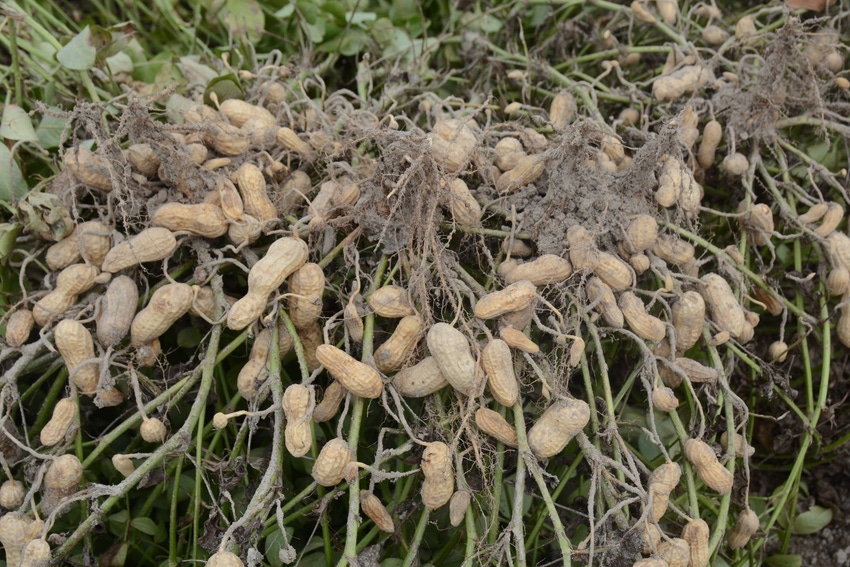
At a Glance
- The goal is to create more demand and create higher value across all sectors of the peanut industry.
- APC is not seeking to grow the international market at the expense of the domestic market.
The U.S. peanut industry won’t give up on current export markets and remains committed to finding new ones as U.S. peanut production is expected to continue to grow in the years to come.
That’s the point Richard Owen, president and CEO of the American Peanut Council, emphasized in a panel discussion on the challenges and opportunities facing U.S. peanut exports at the annual meeting of the American Peanut Research and Education Society (APRES) April 13 at the DeSoto Hotel in Savannah. Owen stressed that the industry won’t give up on such key markets as Mexico, Canada, the United Kingdom, the European Union, Japan and China.
Owen noted that for the last five years, the U.S. has exported roughly 26% of its peanut crop. The number one market is Mexico, followed by Canada, followed by China, the European Union, then Japan. Canada and Mexico represent 58% of the export market for U.S. peanuts.
“The American Peanut Council strategy is aligned on maximizing as much as we can the opportunities in the international markets and try to minimize some of the challenges. Over the next five years or so we have a vision. We want to make sure we have clarity, and we have industry alignment around what success looks like,” Owen said at the APRES gathering.
“Part of what we want to do with our strategy is to make sure all sectors of the industry have a chance to be involved in the game. We want to look at opportunities in new markets,” he said.
Create more demand
The goal is to create more demand and create higher value across all sectors of the peanut industry. Owen said all sectors, from growers to shellers to manufacturers to buying points, will have a voice in the strategy.
“We want to make sure that we create consistent demand for what we believe is a superior product in the international marketplace. Of course, superior product is defined not by us, it’s defined by the customer. We want a loop where the customer is continually telling us what’s good and what needs to be improved with our products,” Owen said.
Owen emphasized that the APC is not seeking to grow the international market at the expense of the domestic market. He said it’s about growing the whole market as the U.S. peanut industry increases production.
“We’re about growing the whole pie. You can’t increase production unless you do something to find a customer for that product being grown, so that’s what we want to do. This is not about trading off demand for domestic versus international. This is about growing the entire pie.”
Other members of the panel highlighted the challenges facing U.S. peanuts in the global market.
“One thing that we as shellers have to deal with almost always is it’s one thing to sell peanuts, but it’s
another to meet the specifications. And they’re very different in different countries. Japan has certain specifications, the EU has specifications,” said Darlene Cowart vice president of food safety and quality with Birdsong Peanuts.
Tight aflatoxin specifications
The specifications set by trading partners are tight, particularly when it comes to aflatoxin.
Adding to the challenge are the additional specifications beyond aflatoxin. Many of the added specifications are extremely difficult to meet.
“You would not believe how picky some of the European manufacturers are just on the color, on the spotting on the kernels, “she said.
Cowart said the good news is that the U.S. peanut industry now understands that peanuts are a food ingredient, not a commodity. She said this is a big shift in attitude from the past.
“Food ingredients are what we are. That’s what we’re doing every day. We’re feeding people. We are all part of the supply chain,” she said.
Exporting U.S. peanuts is a challenge in high aflatoxin years. Cowart said there are other challenges on pesticide levels, heavy metal content and microorganisms. She emphasized that restrictions on pesticide levels are getting tighter and tighter across the world.
Distributing U.S. peanuts to the European Union is particularly challenging. Aflatoxin restricts are very strict and restrictions on pesticide levels are particularly strict. Cowart said the EU has a 16-page regime of every single pesticide the EU won’t allow.
Owen said a challenge exporting to the European Union is that they have their own bodies doing research, such as IFSA (International Farming Assistance Association). He noted that some of the data from IFSA may be counter to some of the risk assessments done by the Codex Alimentarius Commission that develops and adopts food standards that serve as a reference for international food trade. This lends to a debate on whose risk assessment is correct.
�“We always make the case that you go back to those risk assessments that are designated by Codex,” Owen said.
One option is to bring trade disputes to the World Trade Organization (WTO), but it is challenging, complicated and time consuming.
“The WTO, being a legislative body, is an international court. If a country does feel like trade is being impeded, they can take it to the WTO for dispute resolution, but that’s a long process,” notes Foy Mills, vice president of Ag Systems for JLA International.
About the Author(s)
You May Also Like






